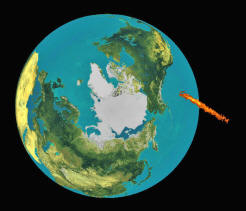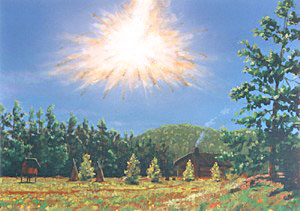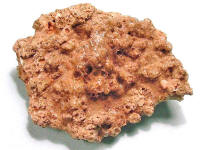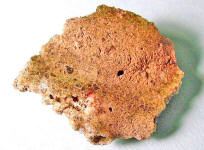|
from MatterAntimatter Website
On June 30, 1908, a comet fragment collided with the earth's atmosphere in Russian Siberia. A great blue-white fireball, brighter than the Sun streaked through the sky, exploded six to eight kilometers in the atmosphere with a blinding flash and intense pulse of heat. The blast could be heard over 1,000 kilometers away. An electromagnetic pulse like anomalies were reported, and magnetic storm began a few minutes after the explosion.
Local and multinational teams of
scientists have visited the site and
observed the destruction that has taken place.
The explosion flattened trees 30 kilometers from the central point
in the Stony Tunguska River Valley. Sides of trees were burned 60
kilometers away. The blast destroyed over 6,000 square kilometers of
forest as the pillar of smoke and dust rose over the area. No crater
was found.
|




